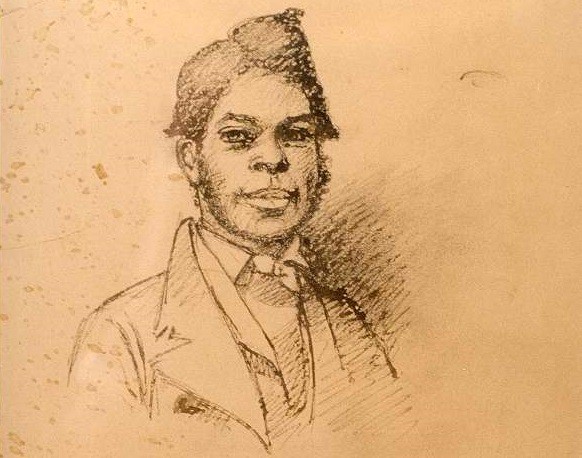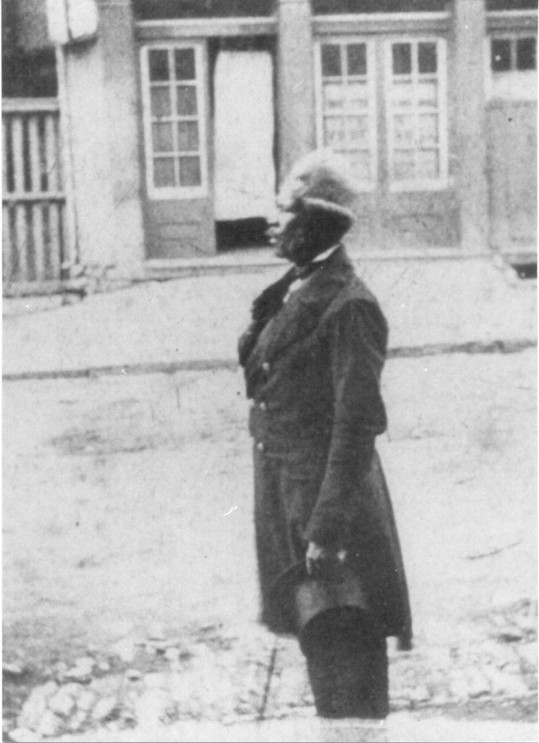Slavery at Ashland
Introduction
Author-Uploaded Audio
Listen to a narration of this entry's description by Victoria Endres.
Text-to-speech Audio
Images
Sketch of Charles Dupuy, son of Charlotte and Aaron

Photo of Aaron Dupuy

Backstory and Context
Author-Uploaded Audio
Listen to a narration of this entry's description by Victoria Endres.
Text-to-speech Audio
At one point spanning 660 acres, the Clay’s farm and home were worked by enslaved African American people. The family relied on the labor of over 120 people from 1804-1865. Henry Clay himself bought nearly half of the enslaved people who worked at Ashland. Despite owning a large number of slaves, Clay supported plans for the gradual emancipation of slaves and potential relocation to Africa. The Clay’s farm was large and prosperous because of the hard work of the Black people who they had enslaved. They produced hemp, cattle, sheep, and racehorses. The slaves were also responsible for the upkeep of the home, raising the Clay’s children, and other skilled labor. No remnants of the slave quarters at Ashland remain, but historians have indicated that they were located along the former farm road.
Unfortunately, little is known about most of those who lived at Ashland as slaves other than their work or purchase. The Dupuy family is an exception as much more is known about their lives. Charlotte “Lotty” Dupuy, her husband Aaron, and their two children Charles and Mary Anne. Charlotte had another son named Henry of whom little is known. Henry was likely born after Charlotte had been raped as he was described as mixed, unlike Charlotte’s children with Aaron who were both described as being Black. Charlotte and Aaron were both born into slavery as were their children. Charlotte and Aaron were married while Charlotte was still owned by James Condon to whom she had been sold at 7 years old. After her marriage to Aaron, Charlotte convinced Condon to sell her to Clay so that she could join her husband.
The Dupuys lived at Ashland where they raised their own children and Charlotte was made to raise the Clay family children. Aaron worked as Henry Clay’s valet and coach driver. Charlotte sued Clay for her freedom after he became Secretary of State and relocated the Dupuys to Washington DC, arguing that her mother was a free woman when she was born, so Charlotte and her children should also be free. The suit was denied and when Charlotte refused to return to Ashland, she was put in jail. Clay forced Charlotte to separate from her family and work for his relatives in New Orleans for 3 and a half years. Sometime after her return to Ashland, Clay freed Charlotte, Mary Anne, and Charles. Historical records do not make clear whether Aaron Dupuy was ever freed by the Clays, but he would have been a free man for several months between the ratification of the 13th Amendment and his death in 1866.
Sources
Biographies, Ashland - The Henry Clay Estate. Accessed October 17th 2020. https://henryclay.org/biographies/.
Enslaved People at Ashland, Ashland - The Henry Clay Estate. Accessed October 17th 2020. https://henryclay.org/enslaved-people-at-ashland/.
Henry Clay, History. July 7th 2019. Accessed October 17th 2020. https://www.history.com/topics/us-politics/henry-clay#:~:text=Although%20a%20slaveholder%2C%20Clay%20disapproved,of%20Indians%20to%20their%20lands..
Structures, Ashland - The Henry Clay Estate. Accessed October 17th 2020. https://henryclay.org/structures/.
https://henryclay.org/biographies/
https://henryclay.org/biographies/
